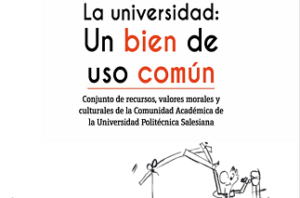La Universidad: Un bien de uso común
Conjunto de recursos, valores morales y culturales de la comunidad académica de la Universidad Politécnica Salesiana
El presente libro recoge los aportes del Grupo de Investigación Bienes Comunes de la Universidad Politécnica Salesiana, creado en el 2016 para profundizar e identificar las implicaciones y posibilidades de imaginar la universidad como un “bien de uso común”. Esta opción debe ser explicada pues la conexión del uso de los bienes comunes – tal como lo entiende Elinor Ostrom en su obra El gobierno de los bienes comunes. La evolución de las instituciones de acción colectiva (2011) – con la posibilidad de repensar la universidad en todos los ámbitos no es inmediata ni es casual y, a primera instancia, tal conexión suena extraña en tiempos en que valoramos la pertinencia basados en evidencias accesibles a primera vista.
Herrán, J., Salgado, J.P., Juncosa, J., Carrera, P., Torres-Toukoumidis, A., & Romero-Rodríguez, L.M. (2018). La Universidad: Un bien de uso común. Abya Yala. https://www.romero-rodriguez.com/download/2030/


